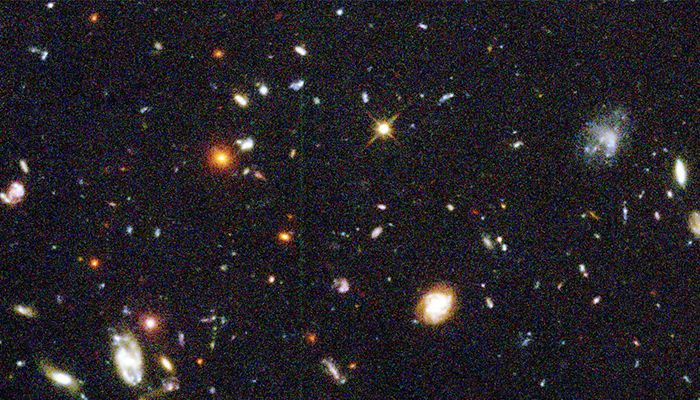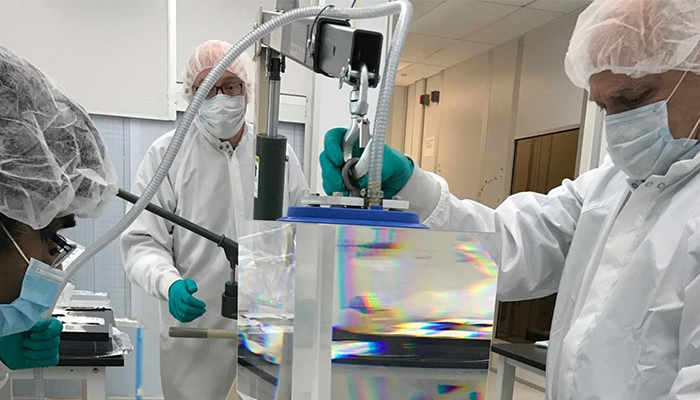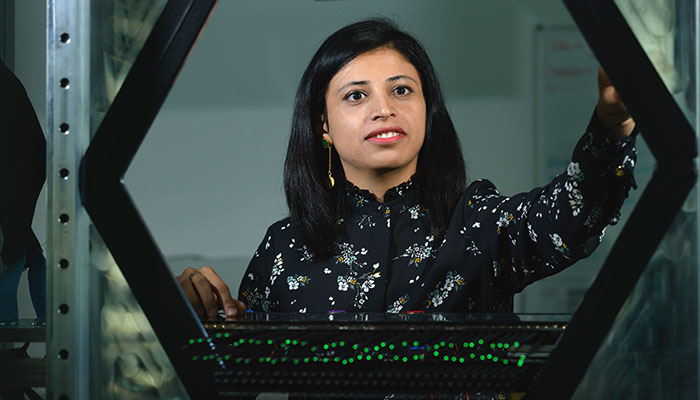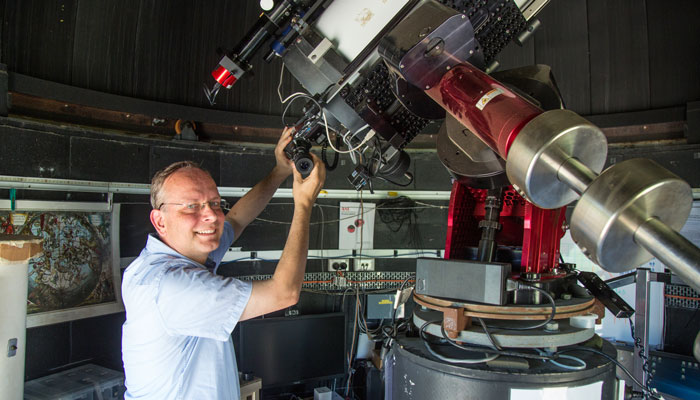A new extreme-precision instrument is set to discover the movement and composition of stars beyond our solar system and the Earth-sized planets that may surround them.

Galaxies far away: Schwab's precision instrument will enable astronomers to search for planets around these stars, captured in this photo by the Hubble Telescope. Image: courtesty of NASA.
Images such as this, caputured by the Hubble telescope, will reveal more heavenly data with Schwab's precision instrument and will enable astronomers to search for planets around these stars.
Dr Christian Schwab, an astrophysicist in Macquarie's Department of Physics and Astronomy is lead optical designer of the new instrument intended to measure the movement of astronomically 'nearby' stars around three times more accurately than the previous generation of high-tech astronomical instruments.
The device detects light no human eye could ever see and is built to detect exoplanets – planets outside our solar system. Not only is it expected to be able to detect planets about the size of Earth, but also gather enough information to work out their mass and establish if they’re rocky planets like Earth, gas planets like Jupiter, or another type.
Astronomy has come a very long way since Galileo started peering into telescopes. Modern astronomers still spend long nights observing, but these days they’re more likely to be observing a computer screen, than spending weeks and months analysing the massive amounts of data captured by the instruments within the telescope.
The astronomer chooses where to point the telescope. Then a computer stores the data collected from the faint trickle of light from incredibly distant objects. For an idea of the distances involved, star 51 Pegasi, the first sun-like star found to host an exoplanet, is (approximately) four hundred and seventy-seven trillion, two hundred and ninety-three billion, eight hundred and fifty-two million, three hundred and forty-one thousand, seven hundred and one kilometres away.
Collecting starlight in the Arizona Desert
Schwab’s new instrument, an extreme precision radial velocity spectrometer, is collecting starlight on the 3.5-meter WIYN telescope at Kitt Peak National Observatory in Arizona, a program of the NSF's National Optical-Infrared Astronomy Research Laboratory. Situated on Tohono O'odham Nation land in the Arizona-Sonoran Desert, Schwab's exoplanet-hunting spectrograph NEID – the name means ‘to see’ in the Tohono O'odham language, and it’s also an approximate acronym for NN-EXPLORE Exoplanet Investigations with Doppler spectroscopy – is now looking to the skies to discover Earth-mass exoplanets.

Final frontier: Astronomers make adjustments to the spectrograph at the Kitt Peak National Observatory in Arizona, USA.
NEID detects exoplanets, not by trying to see them, but by measuring the subtle effect these planets have on their parent stars. The spectrometer measures the way the star’s spectral lines are displaced due to the Doppler Effect – in other words, how light from the star is shifted towards the red or blue end of the spectrum.
When we combine future NEID observations with data from spacecraft, things will really get interesting, and we will be able to learn what planets are made of.
Planets tug gravitationally on the star they orbit, producing a small 'wobble' — a periodic shift in the velocity of the star. This happens in our own solar system — Jupiter causes the Sun to move at roughly 47 km/h, while the Earth generates a gentler movement, with a speed of only 0.3 km/h. Because the size of the wobble is proportional to an orbiting planet’s mass, NEID measurements can be used to determine the masses of exoplanets. Current instruments can measure speeds as low as a slow walking pace of 3.5 km/h, but NEID was built to detect even lower speeds — potentially uncovering Earth-mass exoplanets.
Schwab explains: “The optical design for this spectrograph was challenging, as we wanted to achieve practically perfect image quality over a very broad range of wavelengths, spanning from the ultraviolet to the near-infrared part of the spectrum.
“At the same time, the optics, with 300mm diameter lenses and a very heavy, custom prism, had to be built on a fast timeline. We came up with a novel design that delivers excellent images with fewer lenses, which makes it easier to stabilise it to the extreme degree required by the tiny exoplanet signals."
Exoplanet hunters join forces
Already an impressive exoplanet-hunting machine, NEID becomes even more powerful in partnership with space observatories, such as the Transiting Exoplanet Survey Satellite.
“When we combine future NEID observations with data from spacecraft, things will really get interesting, and we will be able to learn what planets are made of,” says NEID Project Scientist Jason Wright. “We will know the planet’s density, which is a clue to understanding how much of an atmosphere the planet has; is it gaseous like Saturn, an ice giant like Neptune, rocky like Earth, or something in between — a super-Earth or sub-Neptune?”
Enabling NEID to make these measurements requires extreme precision — and an equally extreme instrument. Starlight collected by the WIYN telescope is fed by an optical fibre to a purpose-built thermal enclosure that encases the NEID instrument. To ensure that NEID measurements remain stable over the instrument's five-year lifetime, its optics are held at a fixed temperature stable to within a thousandth of a degree.
NEID’s scientific output will be further increased by making the instrument widely available to astronomers, in contrast to other precision radial velocity spectrometers.
Exoplanets discovered with NEID will help identify targets for follow-up observations with upcoming facilities like the NASA/ESA/CSA James Webb Space Telescope, which will be able to detect and characterize the atmospheres of transiting exoplanets. This makes NEID an important part of the ongoing search for other earths, and takes us one step closer to finding out if there are truly Earth-like planets elsewhere in the Milky Way.
Dr Christian Schwab is a Senior Lecturer in Macquarie University's Department of Physics and Astronomy.



